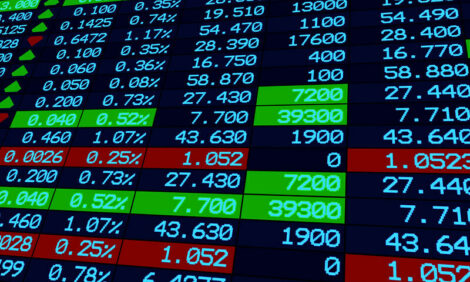



BigFarmNet bundles flow of digital data under one single roof
Mike Brade from the British Big Dutchman agency Newquip on BigFarmNet, the future-oriented Big Dutchman management software for pig units from one single source.In the 1980s and 90s hundreds of pig unit offices were overflowing with information on thousands of sheets of herd recording data. Many managers spent hours trawling through the relevant data looking for pointers that could benefit herd performance. The weakness was that you were dealing with historical information from which you had to pick out trends to predict and direct future policy. The job was tedious and time consuming but this was the best system we had.
Considerable progress
Development in technology over the last decade has transformed the availability and accessibility of information. Modern computer systems give easy access to breeding and feeding herd performance. Computerised environmental, feeding and water systems can be interrogated to access individual data sets. Dynamic weighing systems, like TriSort, provide information on growth rates and enable us to predict throughput and marketing with considerable accuracy.
Although these huge strides have transformed the availability of management information, systems tend to operate in relative isolation. You can look at the feed computer to see how the liquid feed system is performing then go on to look at the climate computers and later you’ll have a look at water use.
As far back as 2010 Big Dutchman developed a new concept for the pig industry – BigFarmNet. Further refinement has continued since. The basis of the system is a range of computers and controllers, all compatible with one another, which link back to a single software control system in the farm office. Individual computers are still accessible from the different parts of the unit.
One software runs all applications: BigFarmNet
The concept does away with the confusing array of parallel computer programs all operating independently of each other. Computers, controllers and sensors can communicate with each other. One piece of software runs all applications whether it is in the breeding herd or the feeding herd covering climate control, feed or water systems. Individual or group animal performance can also be accessed. Information from different sites can be operated from the home system.
The starting point is a customised 3D visualisation of the unit showing each building and system. Clicking onto the image of the individual building opens up sub menus for the different systems contained. For example, you can access the climate system and look at temperature and ventilation rate and – if you have the additional sensors – CO2 and humidity in each room. If you want to alter a parameter, e.g. temperature, you can do so from the master program in the office or direct from the climate computer at the room. Password protection stops someone altering settings without authorisation.
Feed and water systems can be accessed in the same way, looking at feed and water delivery, altering feed curves etc. With load cells installed on feed bins, feed stocks can be checked instantly. All alarms can be accessed, assessed and reset centrally or at the specific computer.
Data on all linked controllers and computers is synchronised when entries are made. Should an interruption of the connection occur the software will hold and reassign the data automatically as soon as the connection is re-established.
Integrating the old with the new
For a number of years now the great majority of Big Dutchman computers – climate, feed, management – have been compatible with BigFarmNet, so the systems involved can, at a later date, be linked up.
Perhaps the most obvious application for BigFarmNet is on a green-field site development where all components can be compatible from the outset. Most systems though will develop over a period of time, initially in new buildings and feed systems, with older facilities being integrated during later refurbishment.
Armchair management?
Some producers fear this type of control will lead to armchair management. The system will never replace good stockmanship but in reality what you are looking at are the tools to enable the best possible hands-on management.
I said in the introduction “Information is the key to management”. I’ll amend that to “Instantly accessible, integrated information is the key to the best management”. If you can find all the information at the touch of a button you can affect management changes to have an immediate impact on your business.








